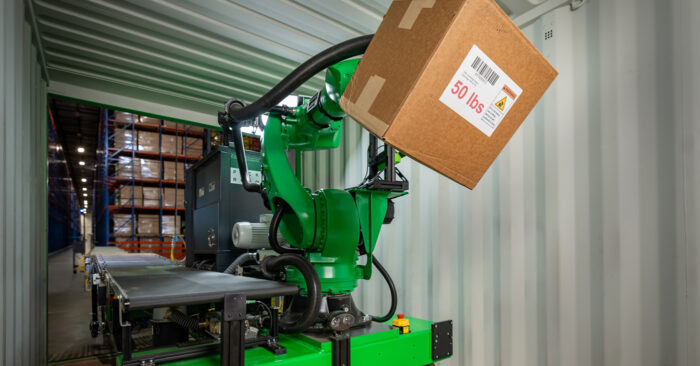If you’ve been reading our blog recently, you may have noticed that we updated our…
Version One
It’s been a while since I last wrote publicly about robotics, though it remains a core focus of my time in deep tech. Our previous post on the topic dates back to last July and given how quickly markets and technologies evolve (and how we naturally refine our thinking over time), it feels like the […]
If you’ve been reading our blog recently, you may have noticed that we updated our…
We’re excited to announce that our new and refreshed website is live! This update was…
It’s been a while since I last wrote publicly about robotics, though it remains a core focus of my time in deep tech. Our previous post on the topic dates back to last July and given how quickly markets and technologies evolve (and how we naturally refine our thinking over time), it feels like the right moment to share an update.
We’ve mentioned this before, but it’s important to repeat. All thoughts here are our preferences based on lessons learned — but we recognize that our sample set is small and we’re far from domain experts. In other words, this post is in no means intended as a statement on the right or wrong way to build a robotics company.
One: Is commoditization in the future?
As investors, we think about where value is being created, captured, and accrued. And we’re always thinking about defensibility. Scaling hardware and vertical integration (when the focus is not only software) is capital intensive given all the R&D, manufacturing, supply chain logistics, implementation, and professional services involved. Companies need to ask what hardware to build and what to buy off the shelf.
In our previous post, we shared that we are now comfortable with the idea that robotics hardware won’t necessarily get commoditized over time, and see the value of vertical integration. For example, portfolio company Pickle Robot uses the Kuka robot arm and has built specific hardware / IP around gripping and the chassis that moves the robot in, out of and within the truck to unload (and soon to load) packages. Optimotive has 3D-printed most of its chassis that is used to traverse extreme terrains for data collection. Both companies develop the AI/autonomy in house.
 Pickle Robot’s unloading technology
Pickle Robot’s unloading technology
 Optimotive’s IRIS
Optimotive’s IRIS
I recently went to ProMat, the global manufacturing and supply chain industry expo. In addition to Pickle Robot, there were at least four other competitors, big and small, demo-ing their solution: XYZ Robotics, Anyware Robotics, Lab0, Boston Dynamics. While all companies have different approaches, it didn’t escape me that there’s a future where every part of every supply chain robot is commoditized, since there were at least a dozen arm manufacturers and booths focused on suction cups, caster, conveyor belts, etc.
Does this mean we need to return to the thesis that software is the key differentiator? For us, the belief in a full-stack approach remains strong — where hardware and software are designed to fully leverage each other. We believe this is the best way to unlock the efficiencies needed to make top-performing hardware.
And on a side note, I’ve been thinking about whether there is a market of “infrastructure” / SaaS for robotics…so if you’re building for the robotics stack, I’d love to chat.
Two: Task-specific robots or generalized humanoids?
In the previous post, I shared that we tend to favor solving a specific problem for a specific customer first. We like seeing demand for a product that addresses a clear need, rather than building technology in search of a pain point. While we respect R&D and academic research, our primary focus is market-driven. Excelling at one thing is crucial for gaining scale and growing quickly — and what may initially seem like a niche opportunity often expands into a much larger market as you branch into adjacent areas.
Today, I believe this more than ever. At ProMat, there was little discussion around general intelligence or robotics foundation models. Yes, it was an industry trade show — but I think it’s still telling of what the industry needs.
Physical Intelligence published an update on the robotic foundation models that they’ve been developing. The demos are really good and we can see how generalized physical AI is inevitable, but there is still a ton to accomplish in vertical use cases. It’s hard to imagine that any generalized robot or humanoid can outperform a robot purpose-built for a specific use case.
For this reason, our current thesis is grounded in practicality: the earliest adoption of robots will not be humanoids but “point solutions” that do a specific task better than a human. And quite possibly, this field will become increasingly bifurcated. On the one hand, we’ll have specially-built robots for highly specific and precision tasks that the human body may not be the most ideal machine to perform (i.e. brain surgery). While on the other hand, more generalized humanoids will be used for tasks where the human form factor is ideal (whatever those use cases might be).
Three: What’s the purpose of automation?
As I wrote in the previous post, it’s trendy to “automate all things,” but is it worth it? A robotics company needs to understand the margins of the target industry/use case to know if there’s a strong enough value proposition for automation to address workforce shortages and/or churn. Are robots going to be cheaper than labor? What happens if the labor involved is genuinely cheap?
Over the past year, we’ve become more convinced that it’s not quite economical to automate everything (at least not yet). But there’s still plenty of low-hanging fruit. The key questions are: What are tasks humans simply can’t do? What are tasks humans can’t do at scale, or for extended periods of time? When tackling a market or winning over a customer, pure cost savings often aren’t enough — especially if the solution isn’t faster, more accurate, or significantly better. In many cases, you need to create new value.
For example, we recently invested in two robotics companies: one that treats crops in the field using UV light (something a human can’t feasibly do by walking around with a lamp), and another that dramatically improves accuracy and precision for neurosurgeons. More on these companies in future posts!
Four: What’s the business model?
We’ve long believed that transformational change occurs when there’s a disruption in both technology and business models. Robot-as-a-Service (RaaS) is becoming a more accepted business model in the enterprise, but there are still many industries that push back on OpEx vs. CapEx, with a preference toward purchasing the robots/hardware outright to gain tax depreciation benefits. Business models for robotics companies will vary, not just from industry to industry, but also across companies within the same industry depending on their priorities.
This is still an incredibly important consideration, but we’re seeing lots of startups getting paid pilots faster than ever which is a great sign!
In sum, we’re more excited than ever to meet entrepreneurs who are automating real enterprise and consumer pain points. And as active investors in crypto, we’re also curious about the intersection of robotics and Web3 — particularly in areas like DePIN (decentralized physical infrastructure networks that leverage token incentives to build real-world systems). If you’re building in this space, we’d love to connect. We’re equally eager to meet anyone working on security for robotics and AI, so we don’t have a Skynet/Cyberdyne situation. Please reach out!
Crypto / Blockchain, Portfolio, Version One
We’re excited to announce our investment in Loon, a Canadian company building the country’s first regulated digital dollar. Version One led Loon’s $3M pre-seed round, alongside Garage Capital and a group of strategic Canadian angel investors. Loon is on a mission to create trusted, transparent payment infrastructure for Canada’s digital economy — starting with CADC, […]
As 2015 comes to an end, it’s time to reflect on what we’ve done and…
As the Internet evolves, the venture capital business starts evolving and we have been seeing…